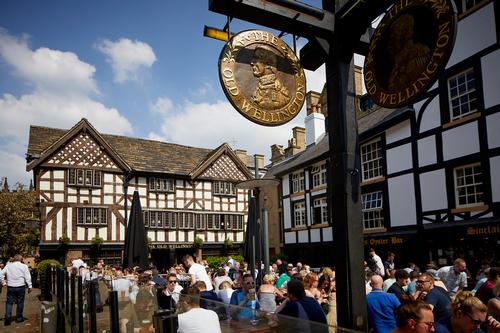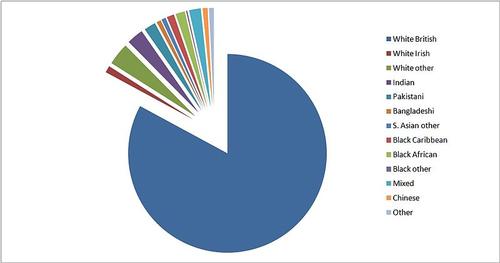ENGLAND
Population

Population

Cities in ENGLAND
| Birmingham | Liverpool | London |
| Manchester |
Popular destinations UNITED KINGDOM
| England | Northern ireland | Scotland |
| Wales |
Population
General
 The English love there pubPhoto: Mark Waugh (CC BY 2.0) no changes made
The English love there pubPhoto: Mark Waugh (CC BY 2.0) no changes made
The residents of England are descended from a number of populations that settled on the British Isles over the course of millennia. The last invasion was that of the Normans in 1066. Before the Normans, several pre-Celtic and Celtic-speaking populations came to Great Britain and Ireland, followed by Romans (55 BC - 410 AD), Anglo-Saxons, Frisians and the Vikings from Denmark and Norway. All these peoples have undeniably left their mark in culture, language and architecture.
The number of British Commonwealth immigrants who came to live in the United Kingdom after World War II, and their descendants, was estimated at 4% of the total population in 1995. Immigrants just after the war were needed to reduce the major labor shortage. The government tried to solve this problem by attracting immigrants from former colonies such as India and Pakistan and from overseas territories in Africa and the Caribbean. The total number ran into the hundreds of thousands in the 1950s and 60s.
 Ethnicity EnglandPhoto: Stevvvv4444 CC 3.0 Unported no changes made
Ethnicity EnglandPhoto: Stevvvv4444 CC 3.0 Unported no changes made
A large proportion of them live in the urban areas of London and Manchester, among others. Many people of Asian descent live in Leicester, Birmingham and Bradford, while many immigrants from Africa and the Caribbean live in London. Since 1962/1968, immigration has become increasingly strict and the number of immigrants has declined. In the 1970s, many refugees mainly came to England, including Uganda, Bosnia, Somalia, Afghanistan and Eastern Turkey. Currently (2024), approximately 13% of the English population is not white.
Domestic migration mainly concerned people from Scotland, Wales and Northern Ireland who moved to the major industrial cities of England.
Demographics
- The birth rate in 2024 was 10.8 per 1000 inhabitants, the death rate 9.2 per 1000 inhabitants.
- Population growth at 0.45 per year (2024).
- The average life expectancy at birth in 2024 was 80.1 years for men and 84.4 years for women.
- In 2024, 16.7% of the population was under 15 years old, 63.9% between 15 and 64 years old and 19.3% over 65 years old.
These figures apply to the United Kingdom as a whole.
Dispersion
England has more than 56 million inhabitants, the United Kingdom as a whole 65.5 million. The lion's share of the UK population lives in England, 9% in Scotland, 3% in Northern Ireland and 5% in Wales. 83% of the British population lives in cities and suburbs.
In 2024, England had a population density of around 434 people per km2. All these people do not live equally across the country. In the West Midlands, for example, there are almost 3000 people per km2. Oxfordshire and Norfolk are areas where the population density is below the national average. Near the Scottish border, in Cumbria and Morthumberland, only 75 people live per km2.
London is the most populous city in England with neighborhoods such as Chelsea and Kensington having more than 13,000 inhabitants per km2. The largest cities in England are: London 9.6 million inhabitants, Manchester 2.6 million inhabitants and Birmingham 1.9 million inhabitants (2024).
Sources
Allport, A. / England
Chelsea House
Bowden, R. / Groot-Brittannië
Corona
Engeland, Wales
Lannoo
England
Lonely Planet
England
Rough Guides
Fuller, B. / Britain
Marshall Cavendish
Groot-Brittannië
Michelin Reisuitgaven
Locke, T. / Engeland
Van Reemst
Parsons, F.S. / Engeland
Van Reemst,
Schaedtler, K. / Highlights van Engeland en Wales
Gottmer
Somerville, C. / Groot-Brittannië
Kosmos-Z&K
CIA - World Factbook
BBC - Country Profiles
Last updated June 2025Copyright: Team The World of Info